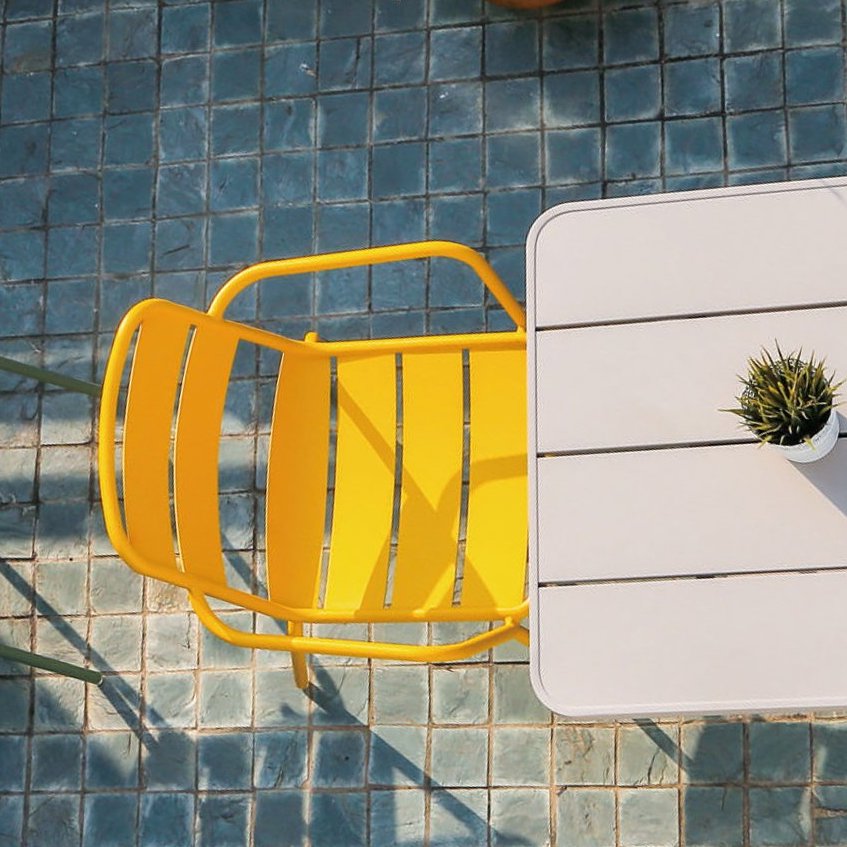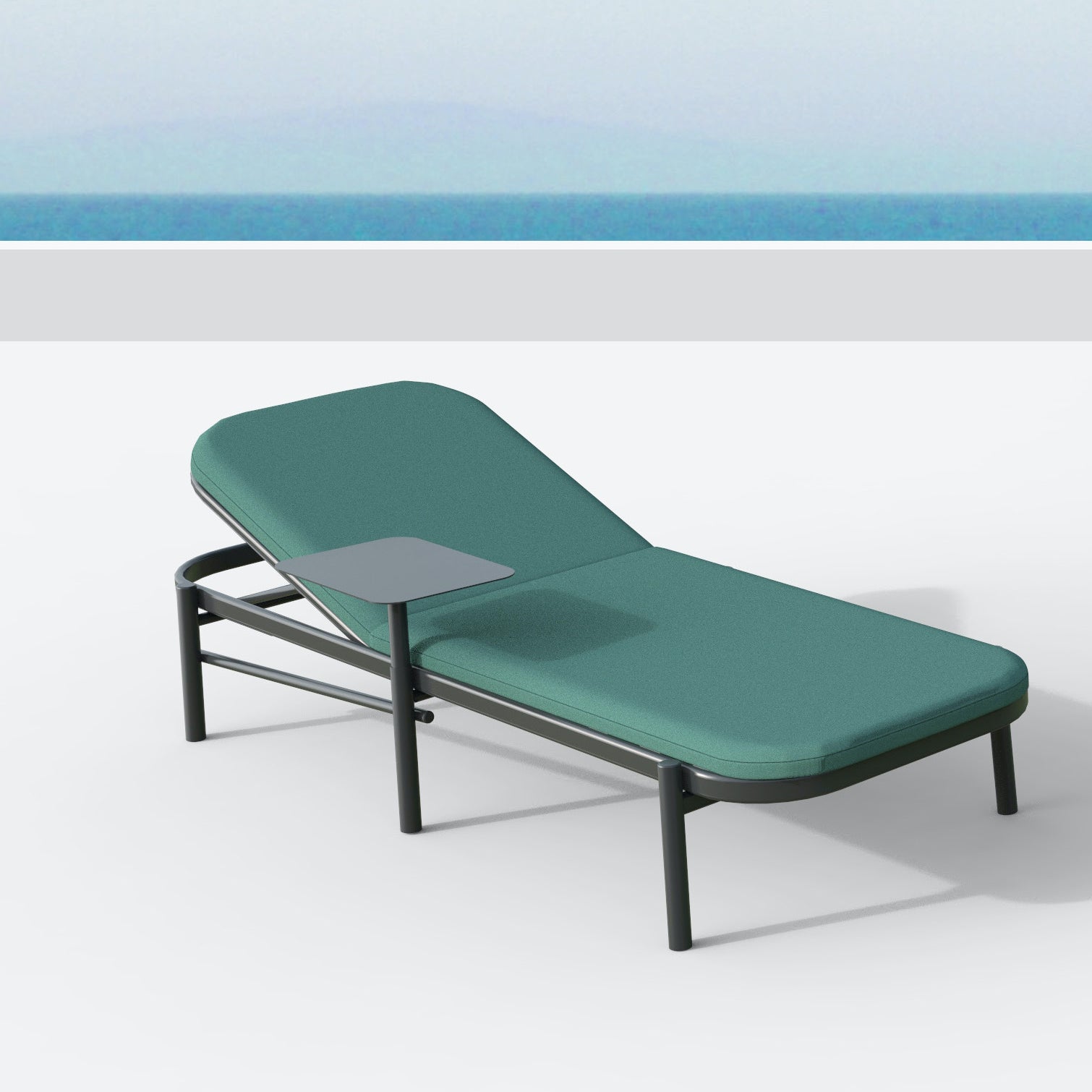We will send you an email to reset your password.
Our Advice
Use and Maintenance
Caring for your Zaneti.
To keep your Zaneti furniture in the best possible condition, we would advise you to respect the following instructions for use and maintenance.
Unwrapping Products
Please take the greatest of care when unwrapping your furniture so as not to damage it in any way. Marks from knives and scissors, scratches from staples or from placing table tops on the ground, etc., are not covered under the Zaneti guarantee.
Cleaning and Maintenance
Metal furniture can be cleaned using either clean water or water containing a non-detergent soap.
The furniture should then be wiped dry to remove any smears or traces of limescale.
Abrasive sponges should not be used to scrub the furniture, and no abrasive powders or other types of detergent should be used.For dirt that is more heavily ingrained, you should use either a window-cleaning product that contains alcohol, or a specific product such as Star brite® Multi-Purpose Cleaner. For furniture incorporating both metal and outdoor technical fabric, the fabric should be cleaned with soapy water.
For ingrained dirt, you should use a brush and a specific product such as Star brite® Multi-Purpose Cleaner. Maintaining Zaneti FurnitureAll our products are delivered with pads that protect the furniture feet as well as floor surfaces. These pads prevent any degradation or damage to the feet resulting from contact with the ground, which can sometimes be damp or harsh. We recommend that you replace any lost pads by ordering a new set from your Zaneti dealer.
Do not cover your furniture with a tarpaulin or plastic tablecloth and avoid prolonged contact with any object that can hold water and humidity (such as flower pots, plate stands, etc.): in combination with heat, moisture can damage the appearance of the paint. To prevent moisture retention, we recommend that you tilt tables (using wedges) and chairs (resting against the table and not placed upside down on them) when not in use.
Table tops should not be covered with plastic sheeting: the chemical components in this type of material can, over time, alter the appearance of the paint as well as its protective anti-corrosion and anti-UV property
Furniture that features OTF (outdoor technical fabric) should be protected from potential damage from contact with sharp objects or sources of heat such as cigarettes.
Due to the nature of the material used, iron furniture does not react well to highly saline environments. For coastal environments, we recommend our aluminium products.
The lifespan of your furniture will vary in relation to the conditions and type of use. To maximise the lifespan of your product, we recommend that you store it in a dry, well-ventilated place during the winter, and ensure it is protected from any knocks and bumps.
We recommend that you clean off any traces of bird droppings as quickly as possible, as these can be particularly damaging and may lead to the permanent corrosion or staining of your furniture.
Maintaining Zaneti Furniture
Zaneti furniture is designed and manufactured using recycled and recyclable materials. To help us protect the environment, please remember to take your packaging and any old unwanted furniture to your local waste disposal centre for recycling.
Cushions - Cleaning and Maintenance
Supported by easy-clean
All Zaneti cushions are engineered to combine the highest level of design and performance. Brush off loose dirt. Spray on a cleaning solution of water and mild soap. Use a soft bristle brush to clean. Allow cleaning solution to soak into the fabric. Rinse thoroughly until all soap residue is removed.
Air dry.
Caring for Teak Wood
In the realm of timber furniture, teak stands supreme. It ranks among the world's most prized timbers due to its unparalleled durability and beauty. With its density and abundant natural oils, teak demands notably less upkeep compared to other outdoor timber furniture. Nonetheless, a bit of regular care and gentle maintenance is advised to preserve your furniture's allure for many years.
The Silver-Grey Patina
Teak initially possesses a stunning honey-gold tone. Yet, with time and sun exposure, it evolves into a silvery-grey patina. This change acts as a natural safeguard against weathering, stemming from the sun's breakdown of tannins in the wood. It's crucial to understand that this transformation is purely cosmetic and doesn't indicate harm to the timber.
While some individuals appreciate the weathered silver appearance, others seek to preserve the original golden hue, achievable by utilizing a specialized teak protector on the wood.
Cleaning Teak Furniture
Caring for teak is straightforward. A brush and warm, soapy water effectively eliminate dirt, minor stains, surface mold, and mildew. Optimal results stem from scrubbing along the grain while ensuring the furniture remains thoroughly wet; avoid cleaning under direct, hot sunlight.
Steer clear of harsh chemical or general timber cleaners. Instead, employ specialized, eco-friendly teak cleaners for superior stain removal and the revitalization of discolored or faded teak.
Persistent stains like grease, red wine, or coffee tend to fade gradually when exposed to weather conditions. For quicker removal of tough stains, delicately sand the affected area with fine-grit sandpaper.
Pressure cleaning teak is possible but exercise caution. Use a low-pressure setting to safeguard the timber and furniture from damage.
Important reminder: Never use metal brushes, abrasive scouring pads, or steel wool on teak surfaces to prevent scratching.
Teak furniture presents the option of treatment or maintaining its natural state. In its raw form, teak adeptly weathers the elements. However, like any wood, it's prone to staining and will gradually adopt a silvery-grey patina.
Specialist teak protectors offer a solution to prevent this color shift and conserve teak's original golden tone. Employing a teak shield also aids in averting stains while preserving the surface's natural appearance.
Before applying any treatment, allow the furniture to be exposed to the elements for four to six weeks. Adherence to the specific product's instructions is crucial for optimal results when treating teak.
Remember, treating teak to retain its color means it will uphold its current shade after the application of a teak protector. For instance, treating silver-grey teak will maintain that hue but won't restore it to its original golden tone (Refer below for methods to restore timber color).
Using general timber oils on teak isn't advisable. Teak's inherent oil content naturally shields it from water damage and decay, preventing drying, splitting, warping, and cracking, common in other woods.
Moreover, oiling teak doesn't prevent its natural fading and restricts the wood's breathability, potentially causing mildew and black spots.
Important: When treating teak furniture, utilize sealers or cleaners explicitly designed for teak wood.
Restoring Teak Furniture's Original HueShould your teak furniture transitioned to a silvery-grey tone, restoring its initial golden shade is feasible with some effort and appropriate products. Gently sanding the timber's surface can effectively eliminate the grey layer, unveiling the golden wood beneath.
Specialized teak cleaner products also facilitate the removal of the silvery finish. Ensuring the timber is thoroughly wet before using these products is essential, and adherence to the product instructions yields the best outcomes.
After successfully removing the silver-grey patina, applying a teak protector helps sustain the restored golden color.
Weathered Teak: A Natural Evolution
When exposed to the elements, teak undergoes a natural aging process, resulting in roughening. Upon its initial exposure to moisture, the timber slightly roughens as it dries—an occurrence known as "grain lift," a typical phenomenon. Alongside grain lift, teak may also develop minor cracks termed "checking," which emerge within the first 3-6 months post-assembly as it settles in its environment. Importantly, these cracks have no bearing on the furniture's strength or integrity.
The resultant roughness from checking and grain lift might not suit everyone's preference. For those desiring a smoother surface, gentle hand-sanding with fine sandpaper is recommended. After sanding, use a dry sponge to clear any residual sawdust, followed by applying a teak cleaner or protector.
Note: Avoid using power sanders on your furniture as they generate heat that can potentially scorch the timber.
Additional Care & Maintenance Tips:
- Avoid exposing the furniture to extreme temperature changes to prevent timber or joint cracking.
- Use the furniture according to its intended purpose to maintain its integrity.
- Prevent direct exposure to extreme temperatures (e.g., placing hot items directly on tabletops).
- Store or cover cushions when not in use to preserve foam quality and prevent fading.
- Ensure all products are placed on level ground to avert potential cracks in timber or joints due to uneven surfaces.
- Regularly inspect stainless steel or brass joints exposed to continuous movement.




